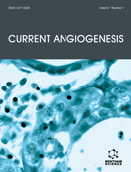Abstract
Platelets play a potentially crucial role in (tumor) angiogenesis. Their high content of growth factors suggests that they are important players in cancer biology. Therefore, platelet characteristics and platelet-derived angiogenic and angiostatic growth factors are progressively being used in biomarker research. However, platelets are vulnerable to manipulations and can easily become activated during blood collection. Therefore, most researchers investigating basic platelet characteristics draw blood without tourniquet pressure and vacuum tubes. However, this method is less suitable for clinical studies, as it is not used in hospitals. Because the effect of the use of a combination of tourniquet pressure and vacuum tubes on platelet activation has not yet been investigated, we set out to do so. After different platelet retrieval procedures, whole blood flow cytometry was performed to quantify two indicators of activation: P-selectin expression and activation of the integrin αIIbβ3 on the platelet surface. Platelets were left untreated or were activated with two concentrations of a weak (ADP) and a strong (thrombin) platelet agonist to investigate platelet reactivity. The results showed no relevant effects of the use of tourniquet pressure and/or vacuum blood collection on the activation status of resting platelets or on platelet reactivity in vitro. Therefore, we conclude that in clinical trials aimed to measure the activation status of resting platelets or platelet reactivity in vitro, samples can be collected during regular blood drawings with tourniquet pressure and vacuum tubes.
Keywords: Blood collection, platelet activation, tourniquet, vacuum.
 44
44

